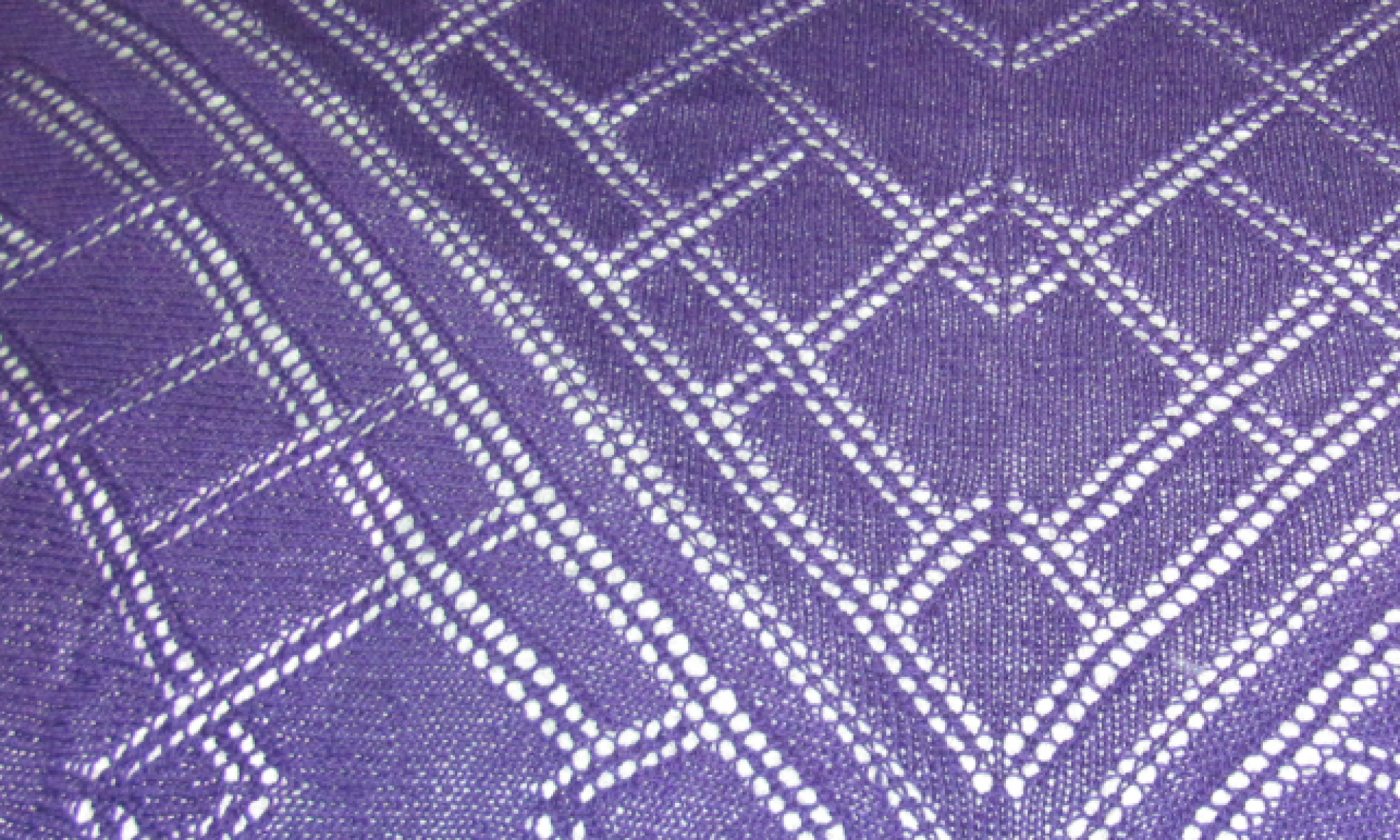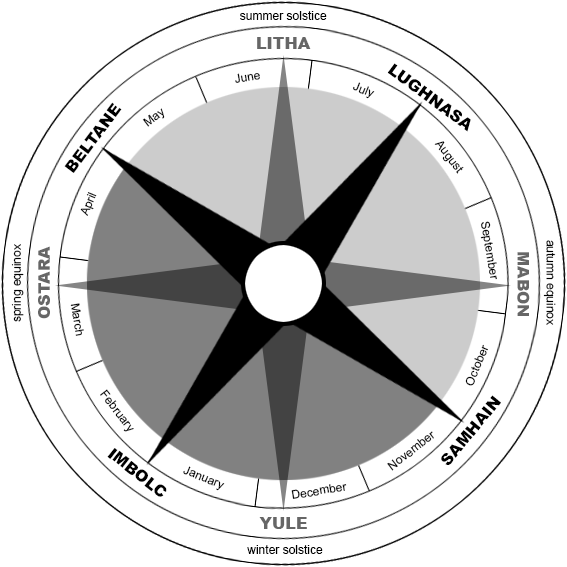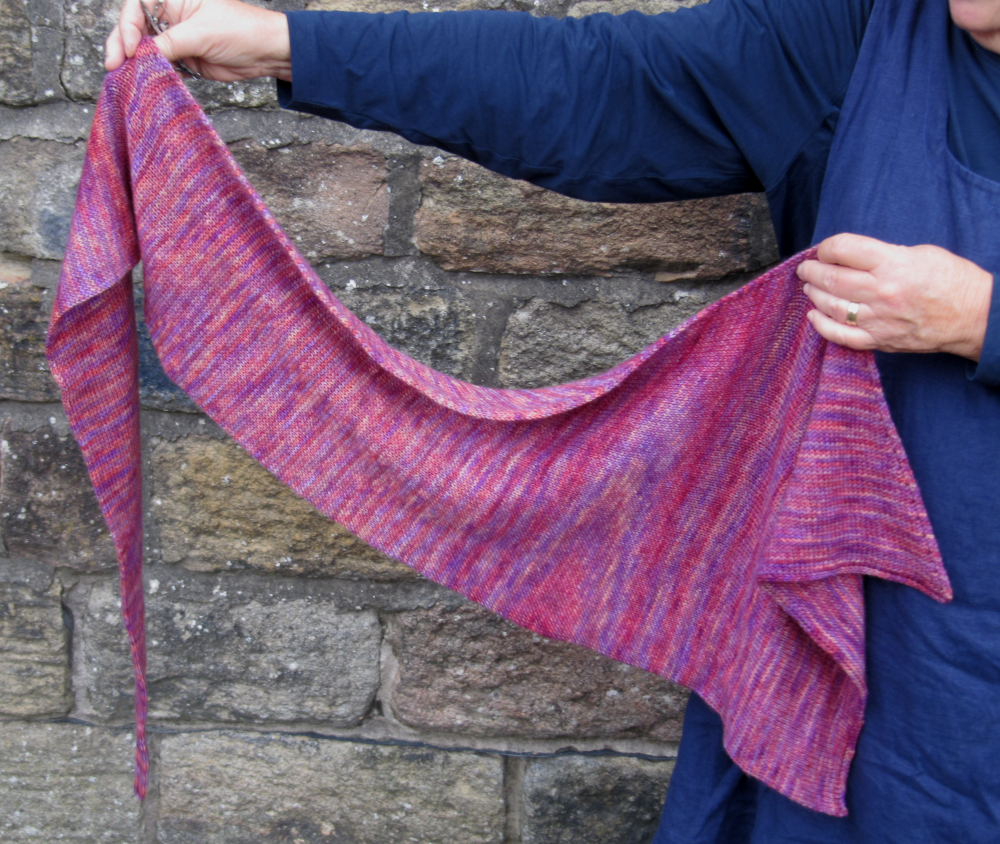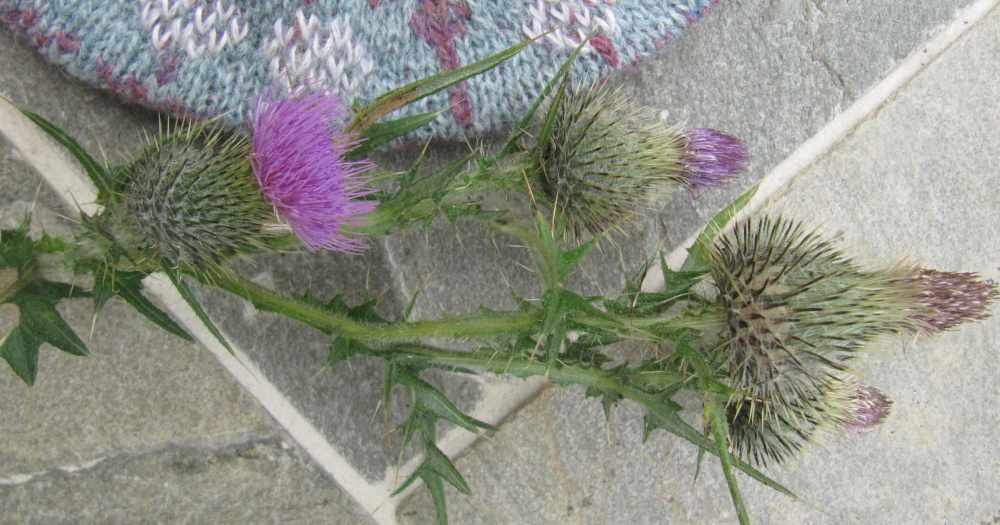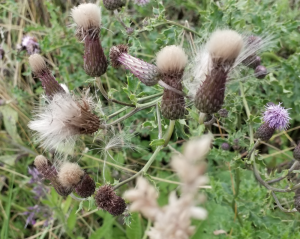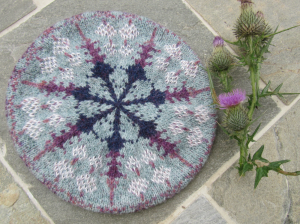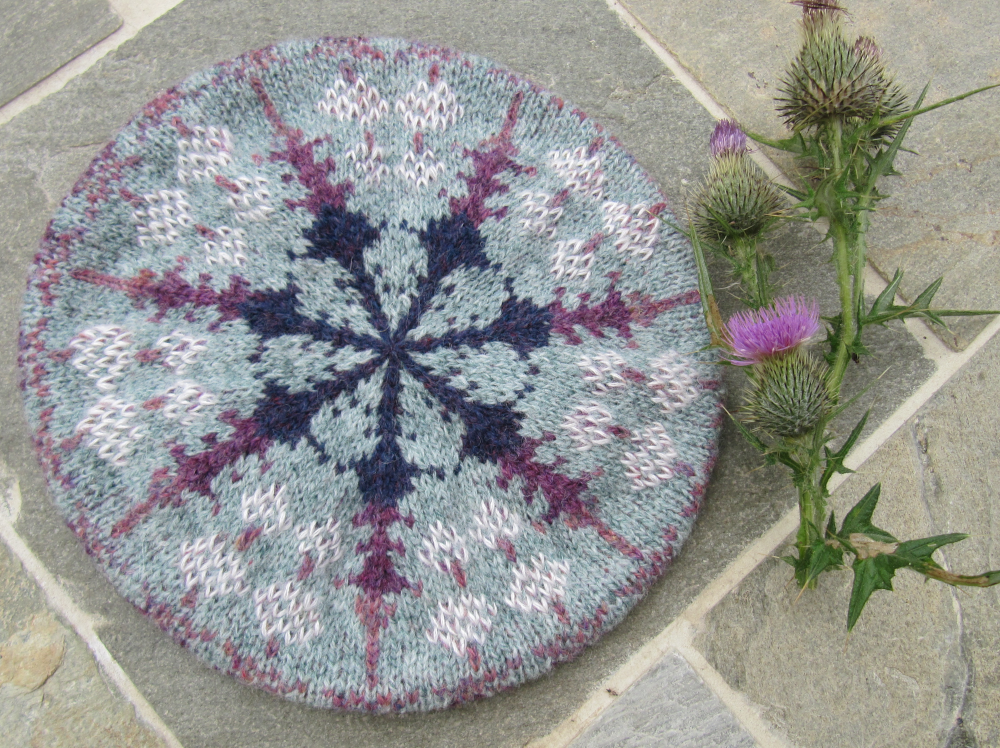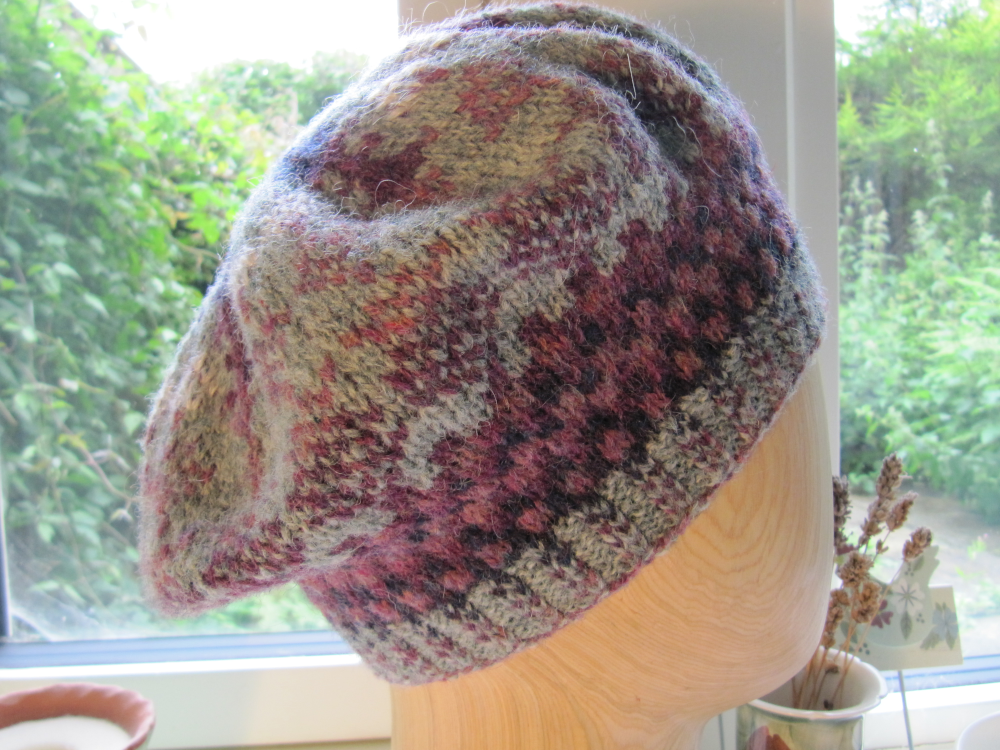The Wheel of the Year is an annual cycle of seasonal festivals, observed by a range of modern pagans, marking the year’s chief solar events (solstices and equinoxes) and the midpoints between them. The Wheel of the Year was devised in the mid-20th century to combine the four solar events or quarter days marked by many European peoples, with the four seasonal festivals or cross-quarter days celebrated by Celtic peoples of the British Isles. Different paths of modern Paganism may vary regarding the precise timing of each celebration, based on such distinctions as the lunar phase and geographic hemisphere.
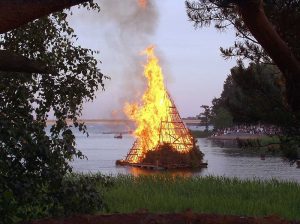
Observing the cycle of the seasons has been important to many people, both ancient and modern. Modern pagan festivals that rely on the Wheel are based to varying degrees on folk traditions, regardless of actual historical pagan practices. Some Wiccans use the term sabbat to refer to each festival.
In many traditions of modern paganism all things are considered to be cyclical, with time as a perpetual cycle of growth and retreat tied to the Sun’s annual death and rebirth. The days that fall on the landmarks of the yearly cycle traditionally mark the beginnings and middles of the four seasons. These eight festivals are the most significant times for community celebrations.
I was inspired to design this series of accessories, in part, by my close proximity to the seasonal cycles of growth (germinating seeds, growing fruit and vegetables, living in a sustainable way) and decay (composting, regrowth). I live a fairly agrarian existence, in the countryside away from urban populations, and I feel the turning of the year keenly.
The designs for this series of shawl and cowl patterns are inspired by the eight Wiccan / Pagan festivals or Sabbats, celebrated at key points in the calendar, plus a ninth design encompassing the whole cycle. I am not a follower of the religious practices but find that the festivals marked in the calendar resonate with me and my connection to the Earth and the landscape in which I live.
The Cycle begins with Samhain, the end of Autumn and the beginning of Winter in the northern hemisphere.
Wheel Image courtesy of CarlCastel, CC0, via Wikimedia Commons
Samhain
The celebration of Autumn’s end. The veil between the worlds is thin at this time, the year is dying.
Samhain (/ˈsɑːwɪn/) is the name of a traditional Gaelic festival held around 1 November. The name and date were adopted by Wiccans for one of their four Greater Sabbats. It closely matches Halloween (31 October) and the two festivals are intertwined. For Wiccans, Samhain is a time to celebrate the lives of those who have passed on, and it often involves paying respect to ancestors, family members, elders of the faith, friends, pets, and other loved ones who have died. Aligned with the contemporary observance of Halloween and Day of the Dead, in some traditions the spirits of the departed are invited to attend the festivities. It is seen as a festival of darkness, which is balanced at the opposite point of the Wheel by the festival of Beltane, which is celebrated as a festival of light and fertility. Many neopagans believe that the veil between this world and the afterlife is at its thinnest point of the year at Samhain, making it easier to communicate with those who have departed.
Some authorities claim the Christian festival of All Hallows Day (All Saints Day) and the preceding evening are appropriations of Samhain by early Christian missionaries to the British Isles.
The Design
My interpretation of Samhain is of simplicity. It can be made as a cowl, using a single precious skein of 4ply/fingering yarn, or as a shawl. It can be knit in any weight of yarn, and can be made as long as you wish. As befits the time of the year, it gives warmth where it is needed. I chose reds and oranges for my samples, as well as a light grey reminiscent of misty autumn days.
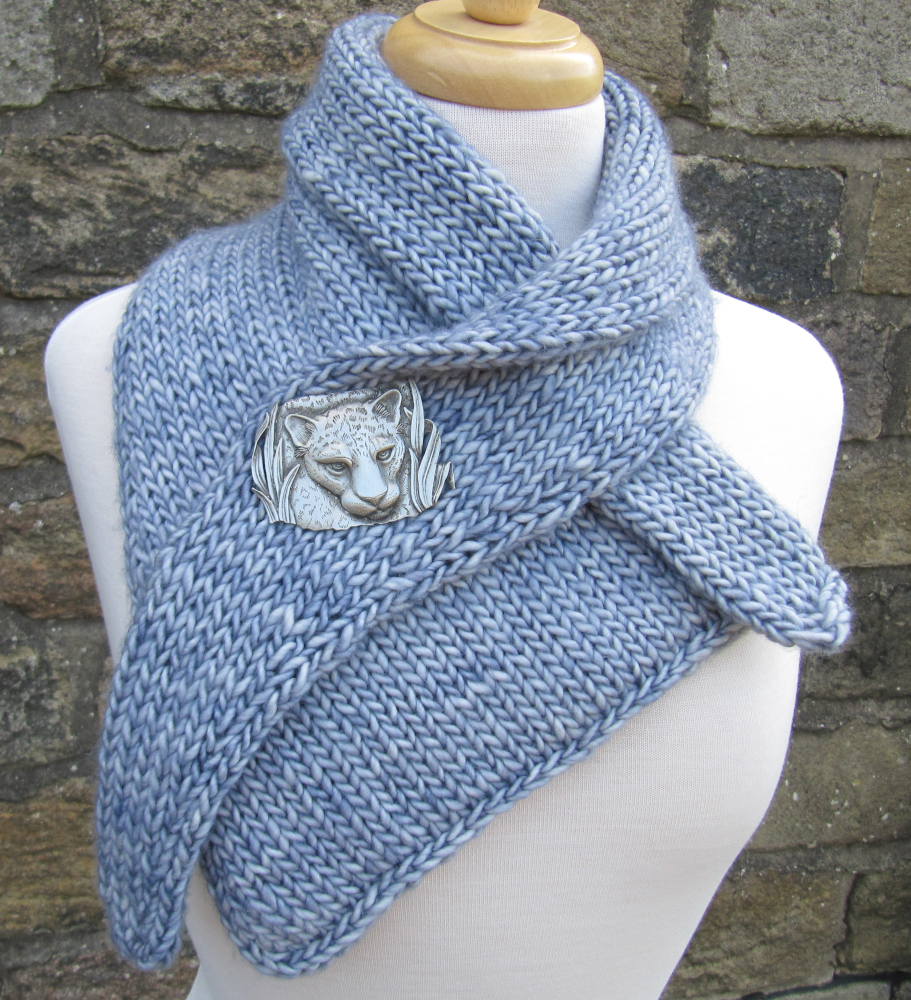
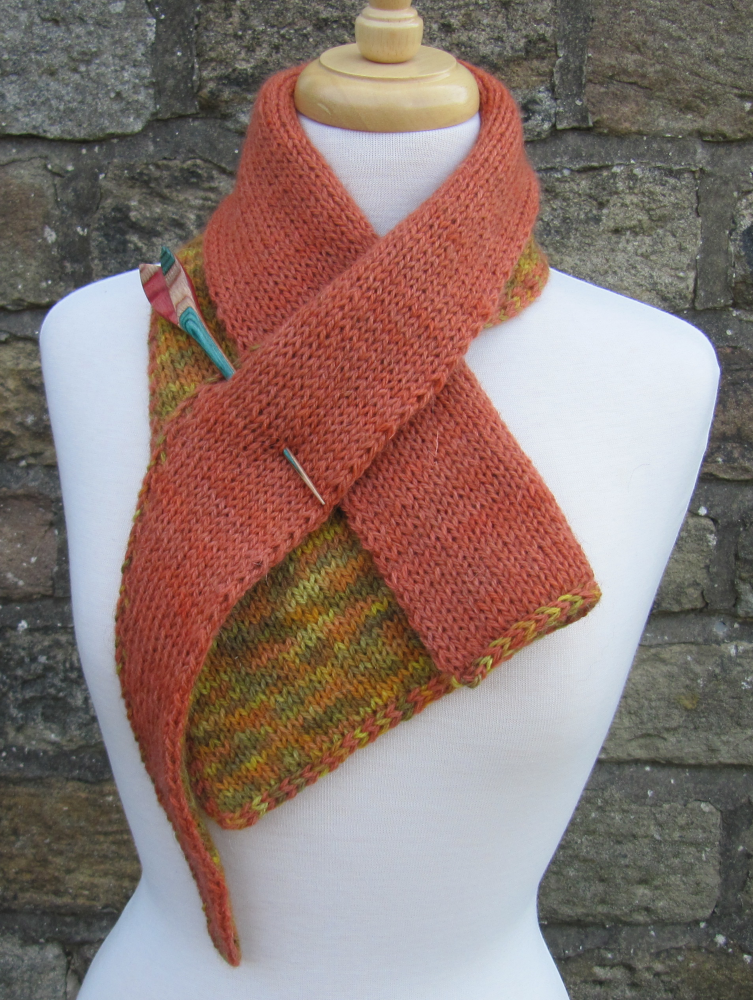
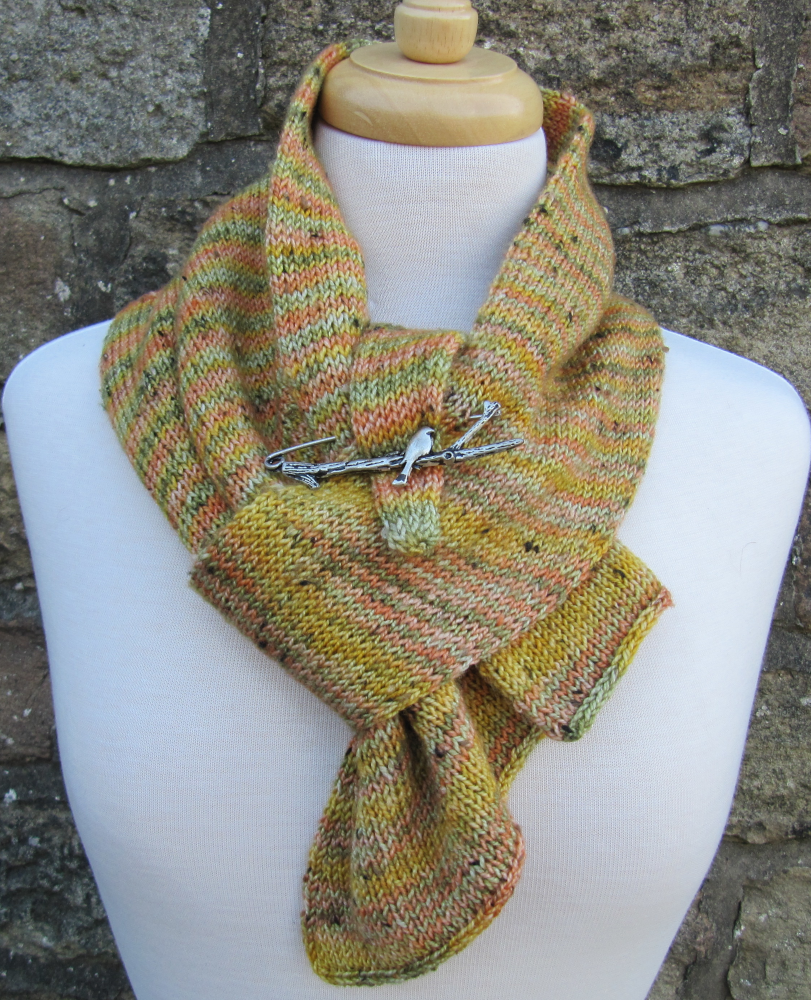
More information on the pattern and links to Ravelry and Payhip stores can be found on the pattern page. The pattern was published on 31st October 2024.
The next pattern will be Yule, published on 21st December 2024.
